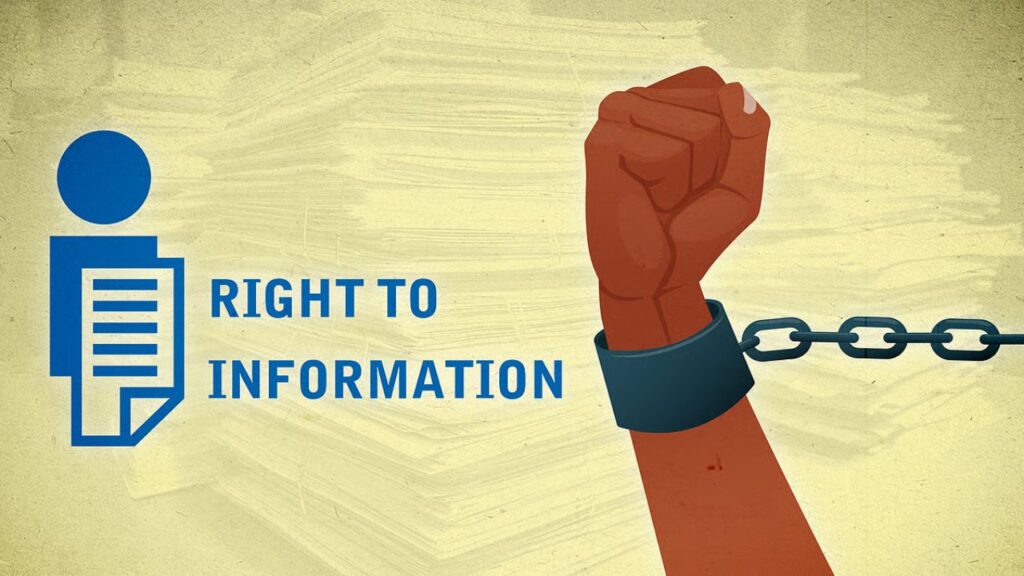Welcome to A Bright Time. So how are you guys? We’ve got you covered today. Breaking News State Public Information Officers to Face Direct Accountability : In a significant development that strengthens transparency and accountability in governance, authorities have announced stricter enforcement measures holding individual State Public Information Officers (PIOs) directly responsible for penalties and adverse observations by the Information Commission. This decisive move aims to eliminate delays and non-compliance in processing Right to Information (RTI) applications, empowering citizens with faster access to public information while ensuring bureaucratic accountability remains paramount in the democratic process.humanrightsinitiative+3
The directive clarifies that Public Information Officers at the state level will bear personal responsibility for any lapses in their duty to provide information within stipulated timeframes. Under Section 20(1) of the RTI Act, the Information Commission can impose penalties of Rs 250 per day on non-compliant PIOs, with the total penalty capping at Rs 25,000. This mechanism serves as a crucial deterrent against the culture of secrecy that has historically plagued bureaucratic institutions across India.humanrightsinitiative+1

Understanding RTI and Its Significance
The Right to Information Act, 2005, represents one of India’s most powerful tools for ensuring government transparency and citizen empowerment. This landmark legislation allows any Indian citizen to request information from public authorities, creating a framework where accountability becomes enforceable rather than merely aspirational. The Act mandates that authorities must respond within 30 days of receiving an application, failing which penalties can be imposed on the responsible officers.india+2
Public Information Officers serve as the critical link between citizens seeking information and government departments holding that information. Their role extends beyond mere information dissemination; they must ensure that applications are processed efficiently, information is provided accurately, and the spirit of transparency is maintained throughout the bureaucratic chain. When PIOs refuse to receive applications, fail to furnish information within specified time limits, malafidely deny requests, destroy information, or obstruct the furnishing of requested information, they face penalties and potential disciplinary action.wblc+2
Enhanced Accountability Measures
The recent emphasis on individual accountability marks a paradigm shift in RTI implementation. Previously, penalties were often viewed as institutional responsibilities, diluting personal accountability among officers. The new directive ensures that each State Public Information Officer understands their personal liability for non-compliance, creating a more responsive system for information seekers.lawbeat+2
The Information Commission possesses the authority not only to impose monetary penalties but also to recommend disciplinary action against PIOs under applicable service rules. This dual mechanism—financial penalties combined with career implications—creates a robust enforcement framework. However, the Act maintains fairness by requiring that PIOs be given reasonable opportunities to be heard before penalties are imposed, allowing them to justify their actions and prove they acted reasonably and diligently.istm+3
How to Write RTI for Application?
Writing an effective RTI application requires clarity, specificity, and adherence to proper format. Your application should begin with the designation of the Public Information Officer of the concerned department, followed by a clear subject line indicating you’re seeking information under the RTI Act, 2005. The body of your application must contain specific questions or information requests, avoiding vague or overly broad queries.rtiwala+2
Each question should be numbered and phrased precisely, such as “Please provide the status of my complaint filed on [specific date] to [specific department]” or “Furnish certified copies of inspection reports for [specific project/location]”. Include your complete contact details including name, address, phone number, and email address. Conclude with your signature, date, and a statement that you’re filing under the RTI Act, 2005. Remember to keep your language simple, direct, and focused on factual information rather than opinions or arguments.reddit+3
How Can I File RTI Manually?
Filing an RTI application manually involves a straightforward offline process that remains accessible to all citizens regardless of internet connectivity. Begin by drafting your application on plain paper or using the prescribed format available on the department’s website. Your application should address the Public Information Officer of the relevant department and clearly state that you’re seeking information under the RTI Act, 2005.tourism+3
Visit or send your application by registered post to the office of the concerned public authority where the information you seek is held. Attach a demand draft or Indian Postal Order for Rs 10 as the application fee, payable to the concerned department (this fee is waived for Below Poverty Line applicants who must attach their BPL certificate). Maintain a copy of your application, acknowledgment receipt, and payment proof for future reference and tracking. The PIO must provide you with an acknowledgment containing a unique registration number that you can use to track your application’s status.india+4
Can I Apply for RTI?
Any citizen of India can apply for RTI without needing to provide reasons for requesting information. The Act empowers every Indian citizen, regardless of their social, economic, or educational background, to seek information from public authorities at central, state, and local levels. You don’t need to be a lawyer, journalist, or activist to file an RTI application—the right belongs equally to all citizens as a fundamental tool for democratic participation.lawyered+4
The online RTI portal at rtionline.gov.in facilitates applications to Central Government ministries and departments, while state governments have their respective portals or offline procedures. You can file RTI applications even if you’re not directly affected by the issue—the information regime is designed to promote transparency broadly rather than limiting access to those with direct stakes. However, RTI applications for state government departments must be filed through respective state portals or offline mechanisms, not through the central portal.india+3
Digital Transformation and Accessibility
The Government of India has significantly enhanced RTI accessibility through digital platforms. The RTI Online Portal allows citizens to submit applications, pay fees through multiple payment modes including net banking, debit/credit cards, UPI, and digital wallets, and track application status using registration numbers. This digital infrastructure has reduced barriers to access, enabling citizens from remote locations to exercise their right to information without physically visiting government offices.india+3
Users can view the complete history of their RTI requests and responses, check current application status, and file first appeals online if their requests are denied or unsatisfactorily addressed. The portal’s tracking mechanism provides updates on pending actions and responses from concerned authorities, promoting transparency throughout the information-seeking process. This technological advancement complements traditional offline methods, ensuring that RTI remains accessible regardless of digital literacy or connectivity constraints.rtiwala+3

Enforcement and Commission Powers
The Central Information Commission and State Information Commissions possess substantial powers to enforce RTI compliance. These bodies can adjudicate grievances, decide matters brought before them, and impose penalties as necessary to ensure that the Act’s purposes are fulfilled. When citizens file complaints or appeals regarding non-compliance, the Commission examines whether PIOs acted without reasonable cause in refusing, delaying, or obstructing information access.wblc+2
The Commission’s authority extends beyond individual case resolution to systemic reform. By imposing penalties and recommending disciplinary action, these bodies send clear signals throughout the bureaucracy about the importance of transparency and timely compliance. The recent emphasis on holding individual State Public Information Officers accountable represents this enforcement philosophy in action, ensuring that responsibility cannot be diffused or avoided through administrative layers.humanrightsinitiative+3
Looking Forward
The strengthened accountability framework for State Public Information Officers signals a maturing of India’s transparency regime. As PIOs understand their personal liability for non-compliance, response times should improve, and the culture of bureaucratic opacity should gradually diminish. Citizens benefit from this enhanced enforcement through faster access to information, better governance outcomes, and increased trust in public institutions.istm+3
The RTI Act remains a living testament to democratic values, continuously evolving to meet citizen needs and address implementation challenges. With clear accountability measures, robust digital infrastructure, and empowered Information Commissions, India’s transparency framework continues strengthening, ensuring that the right to information transforms from a legal provision into a lived reality for millions of citizens.india+3
For more interesting News, Education, Technology, Health, Food, Sports, Job, Business etc., you can visit our website https://abrighttime.com/







